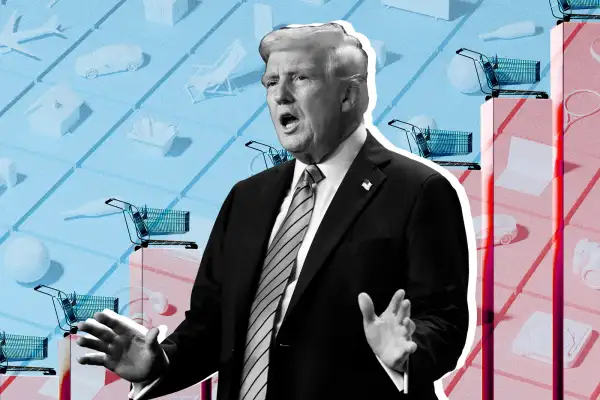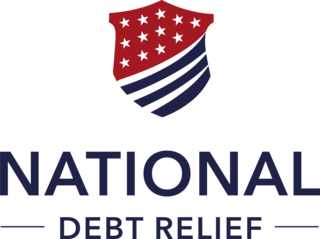10 Everyday Items Trump's Tariffs Could Make Pricier

President Donald Trump's trade war is finally here. Just two weeks after Trump took office, he's implementing a wave of steep tariffs on the U.S.’s largest trade partners.
On Tuesday, an additional 10% tariff went into effect on all goods imported from China. A 25% tariff on goods from Mexico and Canada is expected to go into effect in March (except Canadian energy imports, which will be taxed at 10%). The tariffs on Canadian and Mexican goods were initially scheduled to go in to effect Tuesday, but the two countries reached last-minute deals with the White House to postpone them for 30 days.
Trump campaigned on implementing across-the-board tariffs, which in this case are trade taxes that will need to be paid by U.S. businesses. This is his first major step toward delivering on that promise. In addition to generating federal revenue, Trump says his tariffs will incentivize manufacturing here at home and retaliate against countries he sees as taking advantage of the U.S.
Experts are warning, however, that tariffs could drastically increase the price of everyday products for Americans as businesses pass their higher costs onto shoppers. An analysis from the Budget Lab, a nonpartisan research center at Yale University, found that consumers are set to lose $1,170 to $1,245 in disposable income per household each year to the Trump tariffs.
On his social media site Truth Social, Trump acknowledged the possibility of his tariffs hitting Americans' wallets but ultimately said they will usher in a “Golden Age” in the U.S.
“WILL THERE BE SOME PAIN? YES, MAYBE (AND MAYBE NOT!),” he wrote Sunday. “IT WILL ALL BE WORTH THE PRICE THAT MUST BE PAID.”
What’s getting more expensive from tariffs?
In the coming weeks, certain categories of goods like automotives, consumer electronics, apparel, and food and beverage are at particular risk of major price hikes from this round of tariffs. Here’s a closer look at what’s expected to get more expensive.
Avocados
According to data from the U.S. Department of Agriculture, the U.S. imported about $9 billion worth of fruit from Mexico last year, and over $3 billion of that total was just avocados. Some silver lining: With Mexico’s tariffs on hold until March, the price hikes will likely not affect your Super Bowl guacamole dish.
Beer and liquor
Mexican beer, tequila, mezcal and Canadian whiskey are staples in cupboards and bars across the country, and they will likely get pricier when tariffs on Mexican and Canadian imports go into effect. The U.S. imported nearly $12 billion worth of beer and spirits last year from those two countries.
Cars
The U.S. relies heavily on its neighbors for cars and car parts. Already, the cost of a new car is nearing $50,000, and tariffs are expected to push prices higher still. The Budget Lab estimates that tariffs will increase the cost of vehicles and parts by about 4%.
Clothes and apparel
The U.S. is the world's largest importer of clothing and apparel. While American clothing companies have been moving away from Chinese suppliers in recent years, a significant portion of apparel — especially footwear — is still largely made in China.
The Budget Lab estimates that all wearable apparel prices will rise 3.7% due to increased tariffs.
Computers and electronics
Of all the categories analyzed by the Budget Lab, tariffs are expected to hit consumer electronics — i.e. home appliances, laptops, cell phones and other gadgets — the hardest. Researchers expect prices for these items to jump 5.7%.
Fresh produce
The U.S. imports a lot more fruits and veggies than just avocados. From Mexico alone, the U.S. imported over $17 billion of produce last year. These grocery staples are expected to rise by almost 2%.
Gasoline and energy
Canadian energy is set to be taxed at 10%, lower than 25% for all other products. Still, Canada is the largest source of imported oil and gas in the U.S. Mexico is another major partner.
Due to tariffs, the financial firm TD Economics projects gas prices may rise by 30 cents to 70 cents per gallon. For other forms of energy, Canada also exports a large amount of natural gas, electricity and hydroelectricity to the U.S. Natural gas, for example, is expected to rise 3.5% in price, according to the Budget Lab.
Leather
In addition to being the largest apparel importer in the world, the U.S. is the largest leather apparel importer, too. It gets most of its leather clothing imports from China, which means the cost of leather products are projected to noticeably increase.
The Budget Lab says leather prices are going up 4.5% (second only to consumer electronics).
Maple syrup
Americans eat a lot of maple syrup. And the vast majority of that maple syrup is produced in Canada (then sold to the U.S.). Vermont produces the lion’s share of the U.S. supply of maple syrup, but it’s not clear if Americans will opt for the home-grown version.
Wood, lumber and construction materials
The National Association of Home Builders is warning that tariffs on wood and lumber — about 85% of which come from Canada — could worsen the housing affordability crisis. Similarly, gypsum, which is used in drywall, is largely supplied by Mexico. The combined effect on those two essential materials, the trade group says, could undermine Trump’s own plan to lower housing costs.
On a smaller scale, wood products like desks, tables, chairs and other furniture are expected to get more expensive too, by about 1.6%, according to the Budget Lab.
When will prices go up due to tariffs?
For everyday Americans, the timing of the price changes stemming from Trump’s tariffs will depend on two main things: No. 1, when did the tariff on the country that made that product go into effect? And No. 2, what kind of product is it?
For No. 1, tariffs on Chinese goods are already in effect. So you may notice that the types of goods that usually come from China, like clothing and electronics, to generally go up in price sooner. Since Canadian and Mexican tariffs aren't expected to go into effect until March, the cost of goods that largely come from those countries — including alcohol, produce, car parts and others — likely won't rise for a while.
However, the type of product is a bigger determinant. Items that have a long shelf life — think: durable goods like refrigerators or furniture — may have more gradual price increases, while certain non-durable goods, such as groceries and gasoline, might go up immediately. It all really boils down to what current, non-tariffed items businesses have in stock or storage.
“Goods bought from, say, a physical big box retailer might take a little longer to see effect since retailers maintain some stock,” Ernie Tedeschi, the Budget Lab’s director of economics, recently told Money, “and domestic goods using imported parts might take longer still.”
For example, he said when Trump first implemented tariffs on certain Chinese goods in 2018, the price hikes on washing machines didn't show up in inflation data for about three months because they're durable goods with long shelf lives.
Perishables such as avocados, on the other hand? Those prices might jump up within days of tariffs on Mexican goods going into effect.
More from Money:
The Everyperson's Guide to Making Money in Trump's America
Why Are Eggs So Expensive Right Now — and Will They Get Cheaper?






